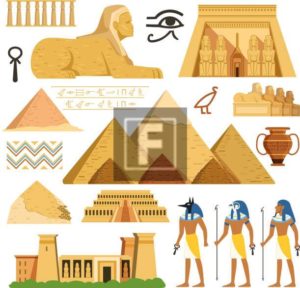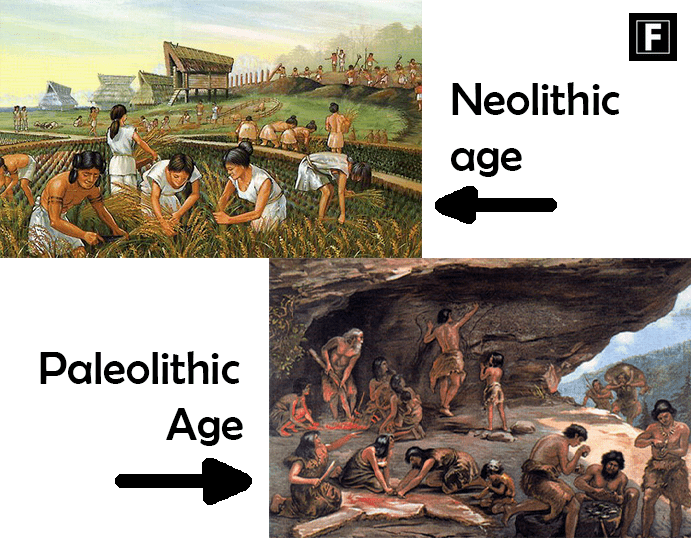We are heading to the top 10 oldest countries in the world, but if you want to know the world’s largest country, then we also have an intensive guide on it. So, before any further discussion, let’s get started with the content.
We will start from the oldest one to the newest one!
Egypt: The world’s oldest country in order
The earliest known Egyptians lived in the Nile River Valley around 6000 B.C. as hunter-gatherer groups. Egypt’s first dynasty began with King Menes in 3100 B.C. King Menes unified Upper and Lower Egypt into one kingdom. He established his capital in Memphis, which is near the modern city of Cairo. Other dynasties followed his rule in later centuries.
The country’s existence dates back thousands of years, if not millions. Its earliest rulers were the Sumerians, who ruled over Babylonia 6,000 years ago. In the third century BCE, the Persian Empire and China became independent nations, respectively. However, there has been no single definitive record of the oldest country in the world. So, what does it matter? In short, the earliest countries were the ones that are still in existence.

Historians disagree on which country is the oldest in the world, but some say that Egypt is the first-oldest. The answer to this question lies in the different cultures and languages spoken in ancient Egypt. The ancient Greeks wrote most texts in Greek in the first centuries of the Christian era. After that, the Egyptian language, known as Coptic, spread throughout Egypt. Currently, it is a predominantly Muslim nation.
Iran
Iran is the second oldest country in the world, having established its sovereignty in 3200 BC. Egypt later surpassed this, which established its sovereignty in 2879 BC. Then came Vietnam, Armenia, North Korea, and Japan, with their establishments around 400 BC. Today, Iran is known as the Islamic Republic of Iran. The first civilizations to inhabit the region were the Lower Palaeolithic. In the Proto-Elamite era, two major civilizations dominated the region: Elam and Jiroft.
The modern nation-state was formed in the 19th century, when Iran arose from an ancient empire. The ancient Iranian civilization existed long before modern civilization began. Its borders were far different, but this did not prevent it from claiming the world’s oldest country title. Its ancient history reveals that the Iranians were an important and influential culture. Their rule extended into Central Asia and Eurasia.
Today, the oldest countries are in Asia. China, Japan, and South Korea have the oldest populations. Italy, Portugal, and Greece are among the oldest, with 22 percent of their population aged 65 and older. And southern Europe, which includes Croatia, Malta, Serbia, and Slovenia, has the second-oldest population. However, only 12 percent of the population in China is 65 or older. For those looking to travel to Iran, the country’s age may surprise you.
Armenia
The dynastic clans that gave Armenia its distinct identity throughout antiquity unified its borders, even though they changed over time. In the early 3rd century, Tiridates IV of Armenia ruled over the greater Armenia region. Artaxias, the ruler of this country, re-founded a new dynasty and established a new alphabet.
During the Middle Ages, the population of Armenia grew from ten to fifteen thousand, and the nation began to find its feet as a unified nation. The Armenian language and Christian religion helped the country grow and thrive. Moses of Khoren, a poet and historian, began writing the History of the Ancient Republic of Armenia, which was published in 1712. Today, there are many Christian churches in Armenia, and the country is home to several thousand members of both the Catholic and Evangelical churches.
China
The fourth-oldest country in the world is China. The ancient Chinese civilization is three thousand five hundred years old. They were ruled by the Shang dynasty, which ruled the region from the 17th to the 11th centuries B.C. The first emperor of modern China was Qin Shi Huang. The nation is one of the most ancient in the world. The Chinese used the first written language, and the people of China shared the same language.
The first countries were city-states. These early societies were quite powerful and influential, but they were not countries in the traditional sense. Then, after a while, a sizable empire joined the cities. These empires spanned the entire world, connecting cities, towns, and cities that were all quite different. Eventually, a nation was born from the ruins of a great empire, and it is a relatively new phenomenon.
Japan
Japan is an island country in East Asia. It’s an island in the northwest Pacific Ocean. Through the country, the East China Sea, the Sea of Okhotsk, and the Sea of Japan all flow. The Korean Peninsula borders it on the east. The Pacific Ocean bounds the west and south of the country. Tokyo is the capital city of Japan. It is a popular destination for tourists from around the world.
While humans have been living in Japan for thousands of years, it was only during the 2nd century that the region received its first written mention. Contact with China and Korea brought the Chinese writing system and Buddhism to the country. The political power in Japan was shifted to feudal lords and military dictators between the 4th and 9th centuries. In the 16th century, the shogunate took power in Kyoto and Nara and began an isolationist foreign policy.
The country is known for its great weather. Its climate is warm all year round and is characterised by a relatively mild climate. In the winter, snow falls on the island, and it is colder in the north. In the spring, it can be cold and rainy. The country’s most prominent event was the Great Kanto Earthquake in 1923. It is a sign of a more prosperous future, but the Japanese government needs to care for its citizens.
Ethiopia
The landlocked country of Ethiopia lies in the Great Rift Valley and is split in two. The country is rich in cultural heritage and has archaeological finds dating back 3 million years. Sites such as Lalibela are famous for their rock-cut Christian churches from the 12th and 13th centuries. In addition to their ancient cities, Aksum and Dire Dawa are worth visiting for their ruins, obelisks, tombs, and castles.
The country’s climate is characterised by a humid, tropical monsoon climate with widespread topographic variation. The country’s Highlands are cooler than the rest of the country. The major cities in the nation are located at 2,000–2,500 metres above sea level, making them less vulnerable to the hot summers and cold winters. Gondar, Axum, and Addis Ababa are historic capitals. Many areas of the country remain undeveloped, contributing to the lack of medical care and medical professionals.
The country has nine administrative countries, divided into ethnic groups. Each of these regions has its own government and democracy. The government of each region has a council that directs regional affairs. The constitution gives each region the right to secede from the Ethiopian nation-state. Despite the large size of the country, it remains a place of diversity. There are many different languages spoken in the country, including Arabic and Somali. Some Ethiopians speak languages such as Afar and Oromo.
Greece
Located in southern Europe, Greece is a country of islands home to thousands of ancient cities. The country has been called the cradle of western civilization. Its capital, Athens, remains the site of the Parthenon temple and Acropolis citadel from the 5th century B.C. But if you’re looking for an island holiday, Greece offers more than stunning landscapes. Popular destinations include black beaches in Santorini and the party island Mykonos.
Since the establishment of the modern state, the Greek class system has been characterised by mobility. After the dismantling of agricultural estates and the departure of the Ottoman Empire, the nation-state and its ethnic groups became coterminous. The fluidity of the class system in Greece is a product of the egalitarian values of Greek society. Public debates continue about how minorities are provided with equal opportunities and rights.
While visiting Greece, visitors should not miss visiting the ancient city of Argos. This is one of the oldest continuously inhabited cities in the world. Throughout history, it remained neutral and did not take part in the Greco-Persian Wars. It now hosts about 22,000 people and many ancient monuments. In addition to the ancient ruins, the city also has numerous museums and galleries open to the public. If you have the time, you should visit the archaeology museum in Argos.
Portugal
Portugal is in southern Europe, on the Iberian Peninsula, next to Spain. Much of Portuguese culture and architecture have been shaped by the country’s location on the Atlantic Ocean. Its beaches, especially the Algarve, are popular with tourists. It is also home to some of Europe’s best-known historical buildings. The country’s maritime empire has left a lasting impact on the local culture and architecture. If you’re looking for a unique holiday, consider planning a vacation to Portugal.
The civil war in Portugal lasted from 1828 to 1834 and raged over the king’s succession. Conservative absolutism defeated liberal constitutionalism, but the country’s population experiences high rates of illegitimacy. Although the civil war ended with the return of the monarchy to the Portuguese throne, there are still many traces of it.
San Marino
San Marino is the ninth-oldest country in the world. The country was founded in 950. It is the only place in the world with a monarchy, and it enjoys a unique form of government. The government of San Marino is a representative parliamentary democracy, with the government and the Grand and General Council exercising overlapping powers. The judiciary is independent of both the legislature and the executive. An Arengo, also known as the head of state, is in charge. It is a pluriform multi-party system, and a captain or regent exercises the power of the Grand and General Counsel. The Grand and General City Council is the highest administrative authority in San Martino, with each district having a mayor.
Moreover, the Three Towers, located on Monte Titano, are the most iconic landmarks in San Marino. The first of these towers, the Guaita, was built in the 11th century and was briefly used as a prison. The second tower, Cesta, is located on the island’s highest summit and houses a museum dedicated to St. Marinus. This area was heavily fortified during the Renaissance period and is still defended today.
France, the 10th-oldest country in the world
France is the 10th-oldest country in the world. It is a republic that has been around for nearly two thousand years. Founded by a stonemason, Marinus, in 301 CE. Its de facto constitution, enacted in 1600, serves as its constitution. It is the first of its kind in the entire world and reflects the long tradition of small city-states in Europe.
The earliest European cities were founded in the 7th century B.C. The Greeks founded Massalia in 600 BC, which is now the city of Marseille. Then, Celtic tribes began to invade parts of eastern and northern France. By the third century B.C., they had spread to the rest of the country. Between the Rhine and the Pyrenees, Celtic settlements were created. These cultures were known as Gaul and were home to the Celts.


